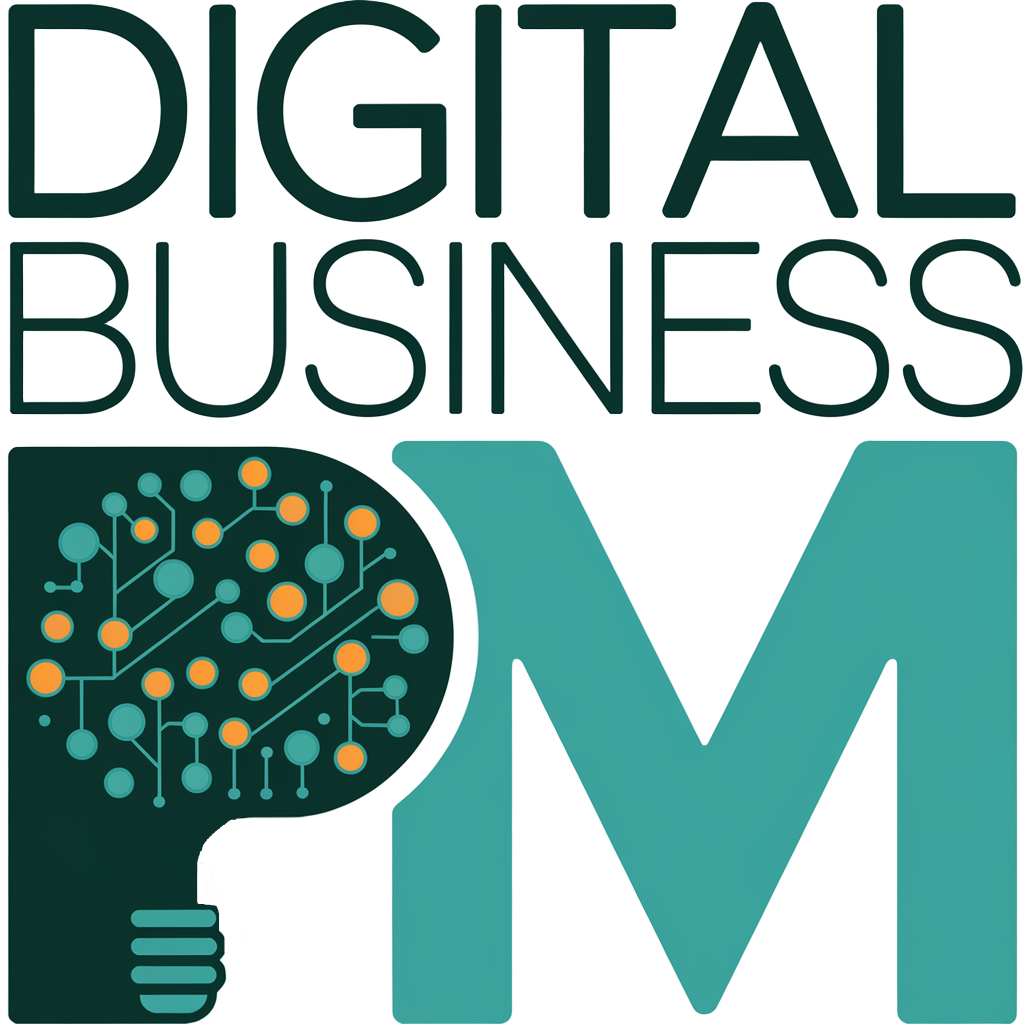The Overwhelm Trap
You planned to “quickly update your website” this week, but three weeks later, you’re still knee-deep in content revisions, plugin conflicts, and design decisions. What went wrong? You mistook a project for a task—and it’s a common trap for digital entrepreneurs.
Another day, another to-do list. You need to complete a multitude of tasks to keep your small business running successfully. If work on that to-do list seems like a run up an insurmountable mountain, maybe there’s a reason.
In discussions with people running small digital businesses and in observing countless webinars for these businesses, I’ve noticed a common tendency to lump routine operational activities and tasks together with activities that really could be considered projects in themselves.
Why Making the Distinction Matters
It’s important to distinguish between tasks and full-fledged projects. Why is this distinction necessary? By recognizing the difference, you can give the appropriate resources, time, and planning to each endeavor to ensure success for your business.
When you do, you are valuing yourself and setting reasonable expectations. You are not allowing yourself to be run down by trying to do more than is realistic. Instead, you can plan for a manageable schedule and appropriate resources.
This strategy will ultimately lead to better-run operations and more creative completion of products and services for your customers.
Task vs. Project: Spotting the Difference
How can you determine whether an activity should be classified as a project or considered just another task on your to-do list? Let’s find out.
What exactly defines a task?
A task is essentially a unit of work — an action aimed at contributing to accomplishing a specific goal. Tasks are typically operational and straightforward. One person can usually handle them.
Efficiency and speed are prioritized when dealing with tasks. You want to complete them efficiently to ensure smooth operations in your business. Many small digital business owners are often responsible for business and creative tasks.
Examples of typical digital business tasks include:
- Responding to client emails
- Scheduling social media posts using a template
- Processing digital product orders
- Updating product listings in your online store
- Sending your regular newsletter using an existing template
- Moderating comments on your blog or YouTube channel
What defines a project?
A project, on the other hand, has a distinct start and end date. You do it to create something unique — a product, service, or some intended outcome. If an activity has multiple steps, interconnected tasks or activities, and spans a longer duration, it likely is a project. There may be deadlines. Multiple individuals or a team might need to contribute to a project, or you could be working on it alone. Special software, training, or other resources might be needed.
Projects can have levels of risk and uncertainty compared to routine tasks. If an activity can potentially significantly impact your business, whether positively or negatively, it qualifies as a project.
Examples of digital business projects include:
- Creating a lead magnet funnel
- Developing an email welcome sequence
- Launching a podcast
- Building a membership site
- Creating and launching an online course
- Redesigning your website
- Writing and publishing an ebook
- Creating a new content strategy
The Entrepreneur’s Task vs. Project Checklist
Use this quick reference guide to determine if you’re dealing with a task or project:
| Is it a TASK if… | Is it a PROJECT if… |
|---|---|
| ✓ It can be completed in one sitting | ✓ It requires multiple steps over days or weeks |
| ✓ It follows an established process | ✓ It creates something new or unique |
| ✓ There’s little risk if it goes wrong | ✓ There are significant consequences if it fails |
| ✓ You have all the skills needed | ✓ You may need to learn new skills or hire help |
| ✓ It’s repetitive or routine | ✓ It has distinct phases with different activities |
| ✓ It requires minimal planning | ✓ It requires coordination of multiple elements |
| ✓ It has a clear, single outcome | ✓ The exact deliverables might evolve |
Why It Matters to Identify Your Business Projects
Six things that can go wrong when projects are treated like your routine business tasks:
1. Underestimating Time and Resource Commitment
Projects typically demand more time, planning, and resources than routine tasks. Miscalculated time and resources can lead to over-commitment. Over-commitment leads to long working hours, high stress levels, and even burnout.
2. Not Prioritizing Effectively
When the work required for projects is marginalized, there can be last-minute rushes to meet deadlines. This can increase the risk of errors, causing the potential for wasted resources if a do-over is required and possibly damage to customer relationships and your reputation if deadlines are missed, or an incorrect product is produced.
3. Neglecting the Need for Specialized Skills
When a project is not recognized as such, necessary up-front planning is not done, and any specialized skills or expertise required might not be recognized early on. This could lead to the business owner attempting to tackle it with their existing skill set or adding to their workload by trying to learn new skills to cope. Or hiring a freelancer could unexpectedly increase costs at an inopportune time. Either way, the budget or schedule could be affected.
4. Inefficiently Using Resources
Small businesses often have limited resources. Not understanding the true nature of a project might lead to not adequately funding the activity and stretching these resources thin — impacting all business tasks and projects negatively.
5. Increasing Risk of Failure
By skipping good project management practices, essential details could be missed on your project, increasing the risk of failure. To avoid this risk, you would ask yourself:
- How do I schedule this work?
- How much will I spend on it?
- What resources do I need to do this?
- Do I face any limitations in doing this?
- What are the risks and how can I handle them?
Resolving these questions up-front can increase your efficiency and reduce stress.
6. Losing Focus on Your Business Strategy
Not effectively identifying projects hinders strategic planning and long-term business objectives. Taking an overall view on a quarterly or annual basis of what projects you choose to take on for your business improves your ability to achieve your business goals.
Right-Sizing Project Management for Your Business
Project management doesn’t mean you need complex software or extensive documentation. For a solopreneur creating a new lead magnet, it might be as simple as:
- Defining what the final PDF will include
- Setting a realistic timeline that accounts for your client work
- Identifying the 2-3 key risks that could derail your plan
- Blocking dedicated time in your calendar for each phase
The key is to scale your approach to match the project’s complexity and importance to your business.
Case Study: From Chaos to Clarity
Meet Maya: A digital course creator who runs a small business teaching graphic design skills to creative entrepreneurs. Maya had been experiencing growing frustration with her business, constantly feeling behind and overwhelmed despite working long hours.
The Problem: Maya kept adding “Create new mini-course” to her weekly to-do list alongside tasks like “Post on Instagram” and “Send invoice to client.” Week after week, the mini-course remained undone, creating feelings of failure and stress.
The Solution: During a business coaching session, Maya realized her mini-course wasn’t a task—it was a full project requiring planning, multiple steps, and dedicated resources. She removed it from her daily to-do list and created a separate project plan with:
- Clear scope definition (exactly what the course would and wouldn’t cover)
- A realistic 6-week timeline with specific milestones
- Identified resources needed (video editing software, graphic templates)
- Potential risks and mitigation strategies
The Result: By recognizing the mini-course as a project, Maya was able to:
- Create more realistic expectations for herself
- Make steady progress through planned project phases
- Successfully launch the course on schedule
- Reduce her stress and regain her enthusiasm
Maya now regularly reviews her to-do list to identify and separate out items that are actually projects, allowing her to maintain better work-life balance while growing her business.
Questions to Ask If It’s a Project
Here are questions to ask to get identified projects on track to successful completion. Your answers will give you an idea of when and how you want to take them on. For small projects, not all questions will matter.
Project Purpose & Alignment:
- What is the purpose and expected benefit of this project?
- How does it fit with the strategic goals of your business?
- What is the priority of this project for your business?
Scope & Deliverables:
- What are the goal and objectives?
- What are the deliverables of the project — the finished service or product or other output?
- What will NOT be included in the final product or service?
- Who are your customers or who will benefit from this project or product?
Resources & Constraints:
- When does it need to be completed?
- What resources do you need to complete the project? What is on hand and what needs to be acquired?
- Will you hire freelancers?
- Will training be needed?
- What is the budget? Where will the funds come from?
- What constraints may limit the project? (budget limitations, deadlines, software availability, expertise)
Risks & Planning:
- What are potential risks and their impact? What is your plan to address these risks?
- What assumptions are you making about this project?
- What is the expected return on investment (ROI)?
- Do you have the time to invest in this activity? Can you fit it into your schedule?
What Now? Immediate Next Steps
If your to-do list is conquering you instead of the other way around, maybe it’s not you; maybe it’s a misidentified task on the list. Here’s what to do right now:
- Review your current to-do list and highlight items that might actually be projects using the checklist above
- For each potential project, answer the 3-5 most critical questions from the “Questions to Ask” section
- Block time in your calendar specifically for project planning
- Create a simple template for future project planning based on what worked for you
Remember: If a task on your to-do list seems more challenging than most, consider its complexity, duration, outcome, risk level, objectives, and requirements. It could be a project, not just another task.
That insight could help make your workload more manageable, less stressful and enhance business success.
This is an expanded and updated version of the article originally published on August 3, 2023.
Looking for more help with managing your digital business projects? Download our free “Task vs. Project Decision Tool” worksheet and stay tuned for upcoming articles on project management essentials for digital entrepreneurs.




